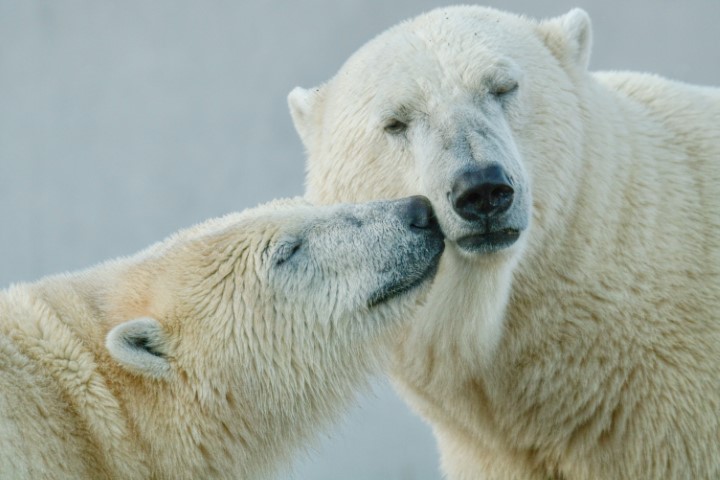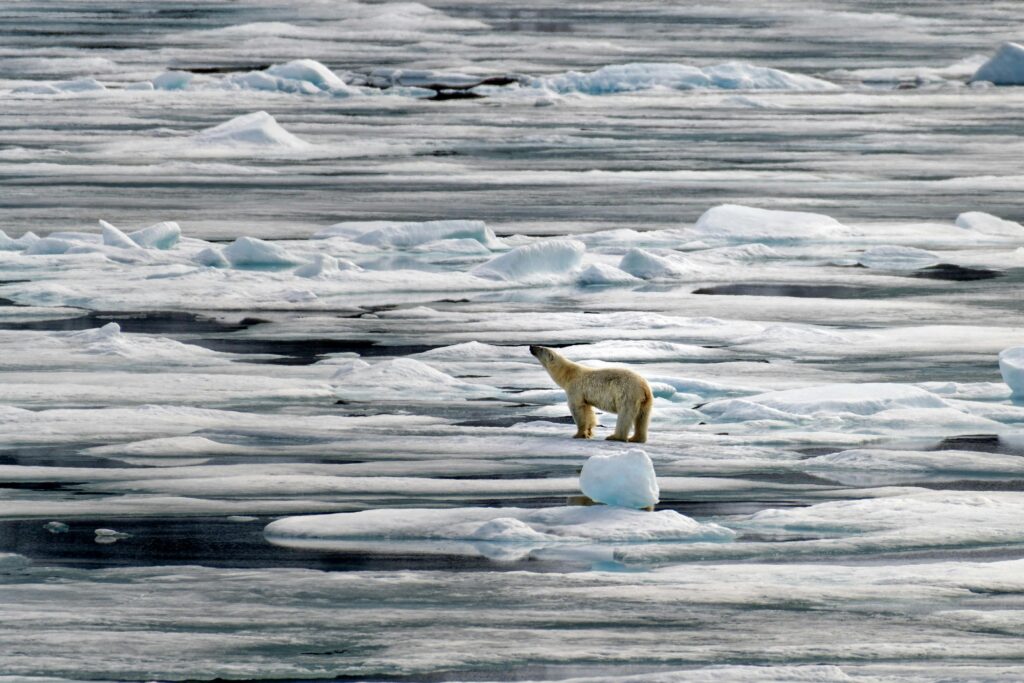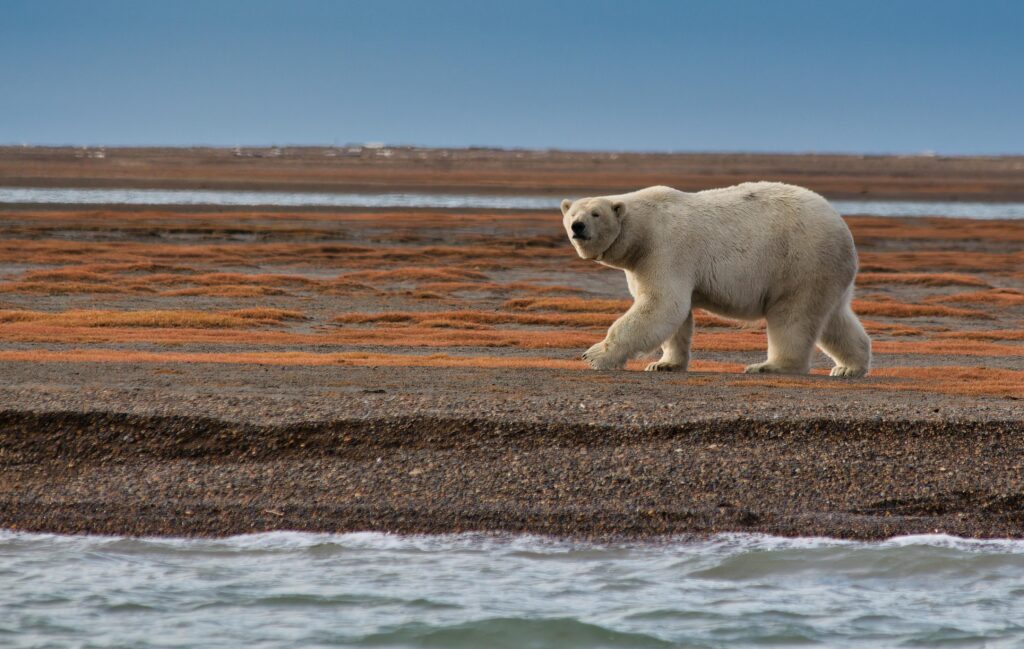February 27th marked International Polar Bear Day, a day dedicated to raising awareness about the majestic creatures that roam the icy landscapes of the Arctic. As we celebrate these magnificent animals, it’s essential to reflect on their current status and the challenges they face, as well as the positive efforts being made to ensure their survival. That is why we decided to create our own International Polar Bear Week!
The State of Polar Bears
Polar bears, the largest land predators on Earth, inhabit the Arctic regions of Canada, Alaska, Russia, Greenland, and Svalbard. These iconic creatures rely primarily on sea ice to hunt for their main prey, seals. However, the rapid melting of Arctic Sea ice due to climate change poses a significant threat to their habitat and survival.
The polar bear is descended from the brown bear. Genetic studies have provided various estimates for the emergence of the polar bear. According to a study published in 2010, based on mitochondrial DNA, the polar bear diverged from the brown bear approximately 150,000 years ago and quickly adapted to life on the Arctic Sea ice.

The current population of polar bears is estimated to be between 22,000 to 31,000 individuals worldwide. While exact numbers are challenging to determine due to the remote nature of their habitat, scientists agree that many populations are declining due to habitat loss, reduced access to food, and other human-related factors.
Life in the Arctic
Polar bears are well-adapted to their harsh environment, with a thick layer of blubber and dense fur to insulate them from the cold. They are excellent swimmers and can travel long distances over ice floes in search of food. During the winter months, female polar bears enter dens to give birth to their cubs, usually between November and February. Unlike other bears, they do not technically hibernate but enter a state of reduced activity known as “walking hibernation”. The mother cares for her cubs in the den until they are ready to emerge in the spring.
In the wild, polar bears typically live around 30 years, but they can live even longer in captivity. The oldest recorded polar bear was Doris from the Detroit Zoo (1948–1991), who reached the remarkable age of 43 years and eight months.
Looking Towards the Future

The future of polar bears remains uncertain, with climate change continuing to threaten their habitat. However, conservation efforts are underway to mitigate these threats and protect vulnerable populations. Measures such as reducing greenhouse gas emissions, establishing protected areas, and promoting sustainable practices are crucial steps in safeguarding their future.
Polar Bears in Captivity
While polar bears captivate audiences in zoos around the world, their captivity raises ethical concerns regarding their welfare. Many zoos struggle to provide adequate space and enrichment for these large, active animals, leading to stress, behavioral issues, and reduced lifespan.
However, some positive initiatives are emerging, with some zoos investing in larger, more naturalistic habitats for their polar bears and participating in conservation programs to support their wild counterparts.
Polar Bear Myths vs. Facts: Debunking Common Misconceptions
Myth: Polar Bears Roam the Streets of Scandinavian big cities
Fact: While polar bears are indeed remarkable creatures, the idea of them strolling through the streets of Scandinavian big cities is purely mythical. Polar bears are native to the Arctic regions and are found primarily in countries such as Canada, Alaska, Russia, Greenland, and Svalbard. The notion of encountering one in an urban setting like Helsinki is simply not grounded in reality. However, it’s essential to remember that myths often stem from our fascination with these majestic animals and the desire to bring them closer to our daily lives, albeit in an imaginative way.
Myth: Polar Bears Have Transparent Fur
Fact: Contrary to popular belief, polar bear fur is not transparent. Instead, it appears white due to its structure, which reflects and scatters light. Each hair shaft is pigment-free and is made up of a hollow core that traps air, providing insulation and buoyancy when swimming. This unique adaptation helps polar bears stay warm in their icy habitat and camouflaged while hunting on the sea ice.
Myth: Polar Bears Cover Their Noses When Hunting
Fact: Another common misconception is that polar bears cover their black noses with their paws while hunting to blend in with the snow. While it’s true that their dark noses stand out against their white fur, there is no evidence to suggest that they actively try to conceal them while stalking prey. Instead, polar bears rely on their keen sense of smell, excellent vision, and stealthy approach to catch seals on the sea ice.
Myth: Polar Bears Prey on Humans
Fact: While polar bears are apex predators and formidable hunters, they are not inherently aggressive towards humans. In their natural habitat, polar bears typically avoid confrontations and will only attack if they feel threatened or provoked. Human-bear conflicts often arise in regions where their habitat overlaps with human settlements or where food sources are scarce due to climate change. Understanding and respecting these magnificent animals’ space and behavior are crucial for coexisting safely with them in the Arctic.
Separating fact from fiction is essential when it comes to understanding and appreciating polar bears’ remarkable adaptations and behaviors. While myths may add to their mystique, it’s essential to rely on scientific knowledge to ensure their conservation and protection in the wild.
As we honor International Polar Bear Week, let us not only marvel at the beauty and resilience of these Arctic giants but also commit to taking action to protect their future. Whether it’s reducing our carbon footprint, supporting conservation efforts, or advocating for better conditions for captive polar bears, every effort counts in ensuring that these magnificent creatures continue to roam the icy wilderness for generations to come.
Have a Happy International Polar Bear Week!

Written by Carina Lintula
Sources:
[1] Polar Bears Evolved Just 150,000 Years Ago LiveScience. 1.3.2010.
[2] Wiig, Ø., Amstrup, S., Atwood, T., Laidre, K., Lunn, N., Obbard, M., Regehr, E. & Thiemann, G.: Ursus maritimus IUCN Red List of Threatened Species. Version 2017.3. 2015. International Union for Conservation of Nature, IUCN, Iucnredlist.org.
[3] Debby, A Short HistoryThe Zoo Society’s Weblog: Blogging About the Assiniboine Park Zoo. 27.11.2008. The Zoological Society of Manitoba.






